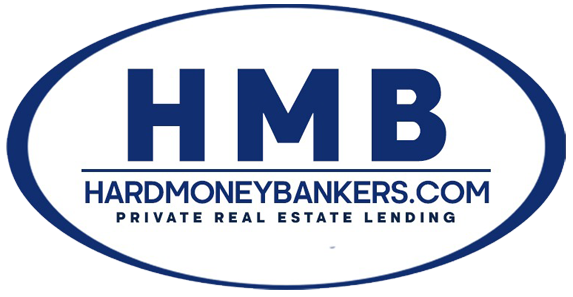The Truth About Fix and Flip Draw Schedules
After lending on over 4,000 private loans, most with renovation draw schedules I understand the importance of fully explaining the renovation draw reimbursement process. The words renovation, rehab and construction draws are all interchangeable in the fix and flip real estate investing space. It is general practice for lenders to only reimburse their borrowers renovation funds on completed work. It might seem silly to have your lender hold these funds BUT this draw schedule system protects everyone involved, including you. But if you don’t understand how it works before you sign that loan, you’re setting yourself up for contractor disputes, cash flow problems, and project delays that can kill your profit margin.
In This Article:
The Two-Part Structure of Fix and Flip Loans
Every fix and flip loan consists of two distinct parts. The initial advance covers your property acquisition, typically 80-90% of the purchase price. This money flows directly to the title company at closing, just like any other real estate transaction. The construction holdback represents your approved renovation budget, but here’s what catches people off guard: these funds stay in the lender’s escrow account.
Think of it this way. If you’re buying a property for $100,000 with $75,000 in planned renovations, your total loan might be $155,000. At closing, you’ll receive $80,000 for the purchase (assuming 80% financing). The remaining $75,000 sits in escrow with the lender, waiting for you to complete specific phases of work before releasing any funds.
Most hard money lenders structure their loans around 65% of the After-Repair Value (ARV). This constraint serves a critical purpose. It ensures you have enough equity cushion to handle market fluctuations and unexpected costs. If your ARV is $250,000, your maximum loan would typically be $162,500, regardless of your actual costs.
The interest calculation method matters more than most investors realize. Most lenders charge Dutch Interest. That means you are paying interest on the entire loan amount (even funds sitting in escrow waiting to get drawn out for completed renovations). Although this might not seem ideal, it does ensure the lender has set aside these funds for your project and will be available for when you need them and they can’t use them for anything else.
And in case you are wondering about the difference between Dutch and Non-Dutch Interest. It’s based on how and when the interest is charged:
- Dutch interest: The borrower is charged interest on the entire loan amount from the beginning of the loan. (Most private and hard money lenders do Dutch Interest)
- Non-Dutch interest: The borrower is only charged interest on the funds disbursed and actually drawn down to cover project cost. (Most banks do Non-Dutch Interest)

Creating Your Scope of Work and Draw Schedule
Your Scope of Work (SOW) isn’t just a budget estimate. It should be a contractual foundation with your contractor that determines when and how you’ll receive your renovation funds.
A proper SOW breaks down every aspect of your renovation into line items with separate costs for materials and labor. Instead of writing “Kitchen Renovation – $15,000,” you need specifics: “Remove existing cabinets – Labor $500,” “Install 15 linear feet of base cabinets – Materials $2,500, Labor $1,200,” “Install granite countertops – Materials $2,800, Labor $800.” This level of detail isn’t bureaucracy. It’s what allows an inspector to verify you’ve actually completed the work you’re claiming.
Your general contractor needs to review and sign off on this SOW before you submit it to the lender. I’ve seen too many projects where the investor created a budget, got it approved by the lender, then discovered their contractor needed 30% more to actually do the work. That gap would be your responsibility and dip into your profit margins.
The SOW translates into a draw schedule, typically structured around 3-6 milestone payments. A typical $75,000 renovation might look like this:
- Draw 1 ($15,000): Demo, framing, and structural work complete
- Draw 2 ($25,000): Roof, siding, windows, and all rough-ins complete with passed inspections
- Draw 3 ($15,000): Drywall complete and ready for paint
- Draw 4 ($18,000): All interior finishes installed
- Final Draw ($2,000): Punch list and landscaping complete
Always include a 10-15% contingency in your budget. Example, properties built before 1960 in Baltimore almost always have surprises behind the walls. That contingency isn’t pessimism, it’s REALISM.
Ready to get your fix and flip project funded? Apply for a loan today (no cost, no obligation) and we can typically close as soon as title work is ready.
The Step-by-Step Draw Process
Here’s the part that trips up most first-time flippers: draws are reimbursements, not advances. You pay for the work first, then request reimbursement from the lender. This means you need working capital beyond your down payment to float the first phase of construction.
When you complete a milestone, you submit a draw package to your lender. This isn’t a simple email saying “work’s done, send money.” BUT most hard money lenders have a pretty streamlined process compared to traditional banks. You need:
- The lender’s draw request form
PLUS some lenders might also require the following based on the project:
- Invoices from every contractor and subcontractor
- Proof of payment (canceled checks or bank statements)
- Lien waivers from everyone who worked on that phase
- Photos documenting the completed work
- Updated budget showing costs to date
Being organized will expedite your reimbursement process. I’ve had borrowers scrambling to track down a drywall subcontractor for a signature while their framers are waiting to start the next phase. Every day of delay costs you interest and risks losing good contractors to other jobs.
Once you submit the draw package, the lender orders an inspection. This inspector isn’t checking quality (though they’ll note obviously deficient work). They’re verifying that the work claimed in your draw request actually exists on the property. If you say framing is 100% complete but there’s still a wall missing, your draw gets reduced or delayed.
The inspection typically happens within 1-2 business days of your request. After approval, funds usually hit your account in another day or so. But here’s what many people miss: if there are any discrepancies or missing documents, that timeline could be delayed. A clean, complete draw package processes in a few days. A messy one can take a week.
Draw fees range from $150 to $300 per inspection, depending on your lender and location. Factor these into your holding costs. On a typical 3-draw project, you’re looking at $750 just in inspection fees.

Maryland-Specific Requirements
Resources like PropertyMetrics’ comprehensive guide on construction draw schedules can help you grasp the fundamentals, while Maryland-specific requirements demand extra attention. For instance, before you can receive your first draw in Maryland, you’ll need to ensure your contractor is properly licensed through the Maryland Home Improvement Commission (MHIC). These aren’t just bureaucratic hoops to jump through. They’re safeguards that protect both you and the lender throughout the renovation process.
Maryland has unique requirements that can stop your draws cold if you’re not prepared. First and foremost, your general contractor MUST have a Maryland Home Improvement Commission (MHIC) license for any work beyond basic maintenance. You can verify licenses online through the Department of Labor’s portal.
Using an unlicensed contractor doesn’t just risk your draw approval. It voids your insurance, exposes you to liability for injuries, and eliminates your recourse through the state’s Guaranty Fund if work goes bad. Lenders will require a copy of the MHIC license before approving your first draw.
Building permits are required for almost everything beyond cosmetic updates in Baltimore City, Montgomery County, and Prince George’s County. The permit must be posted visibly on the job site. Inspectors check for this during every draw inspection. No visible permit could mean issues with getting your draw approved.
Maryland’s approach to lien waivers creates another potential snag. Unlike states with standardized forms, Maryland lets each lender set their own requirements. The generic lien waiver you downloaded online won’t work. You need to use your specific lender’s forms, and you need both conditional waivers (when submitting invoices) and unconditional waivers (after payment clears). Make sure to ask your lender if they require lien waivers.
Here’s a critical detail for Baltimore: the city has separate permit requirements from Baltimore County. Properties near the county line need extra attention to ensure you’re pulling permits from the correct jurisdiction. I’ve seen draws delayed because someone pulled a Baltimore County permit for a Baltimore City property.
Municipal inspections create another layer of timing complexity. Your electrical, plumbing, and HVAC rough-ins need to pass county or city inspection before you can insulate and drywall. These municipal inspections are separate from your lender’s draw inspections. Failed municipal inspection means work stops, which means your draw request stops too.
Common Draw Problems and Solutions
After funding thousands of deals, I see the same draw problems repeatedly. Incomplete draw requests or requesting funds for incomplete work. It slows down the reimbursed process and sometimes questions the borrower’s credibility if they claim there is more work done there than there clearly is.
Scope creep can delay draws as well. You decided to upgrade from vinyl to hardwood flooring. Great choice for resale value, but that cost difference might have to come out of your pocket so there is ample funds available to still finish the project.
Timing mismatches between work completion and draw requests cause unnecessary stress. Some investors try to request draws when work is 90% done to keep cash flowing. Bad strategy. Inspectors report facts, not percentages. Either the work is complete or it isn’t. That missing 10% means you get nothing until it’s finished. It makes sense to communicate with your lender to try to get an exception if you need the additional funds.
Contractor payment disputes can lock up your entire project. Your electrician claims you owe $5,000, but you say it’s $3,500. While you’re arguing, they won’t continue the work or won’t sign a lien waiver (on projects that they are needed). This could hold up draw requests. Build clear payment terms into every contractor agreement, including penalties for late completion and bonuses for early delivery.
Cash flow crunches happen when investors underestimate the float period. You need enough liquid capital to cover the first phase of work plus holding costs for at least 30 days. If your first draw is $15,000, you need at least $20,000 in available cash to handle materials, labor, and carrying costs while waiting for reimbursement.
Managing Cash Flow Between Draws
Successful flippers master the art of cash flow management. You’re juggling contractor payments, material deliveries, and loan payments while waiting for draw reimbursements. One late draw can trigger a cascade of problems that torpedo your profit margin.
Start by negotiating payment terms with your contractors. Many will accept 50% upfront and 50% on completion if you have a good relationship. Some material suppliers offer 30-day terms to established customers. These arrangements give you breathing room between paying for work and receiving your draw.
Consider opening a business line of credit specifically for managing draw timing. Even $25,000 in available credit can smooth out the gaps between paying contractors and receiving reimbursements. The interest you pay for a few weeks of float is minimal compared to the cost of work stoppages.
Schedule your work strategically. Don’t start the next phase until you’re certain the current draw will be approved. I’ve seen investors eager to maintain momentum start kitchen installation while waiting for their framing draw, only to have the framing draw denied due to incomplete work. Now they’re floating two phases of work instead of one. The good news is a reputable hard money lender should always be helping and communicating with you so you don’t get in a bind.
Track every expense in real-time, not at draw submission time. Use construction management software or even a simple spreadsheet. When it’s time to submit your draw, you should be able to compile your package in under an hour, not spend days hunting for receipts.
Build relationships with your lender’s draw processing team. Know their names, their direct numbers, and their preferred communication methods. When you need a draw expedited because your plumber is threatening to walk off the job, that relationship makes the difference between same-day approval and waiting another week.
Never, and I mean NEVER, use funds from one project’s draw to finance another property. That’s called commingling. And it’s the fastest way to destroy your relationship with lenders and potentially face legal consequences.
Looking for fast, flexible funding for your next flip? Submit your application and we’ll review your deal within 24 hours.
The Bottom Line on Draw Schedules
The draw schedule is a system that protects the lender’s capital while enforcing project discipline that actually helps you succeed. The lender is funding your loan based off the after repaired value so they want to make sure you are succeeding as well. Every requirement, from detailed scopes of work to lien waivers, pushes you toward professional project management.
Your first flip will probably involve some draw delays and cash flow stress. That’s normal. By your third or fourth project, you’ll have systems in place that make draws routine rather than traumatic. The investors who struggle are those who never accept that construction draws are reimbursements, not advances.
Budget for reality, not optimism. Include contingencies, inspection fees, and float capital in your financial planning. Use licensed contractors, pull proper permits, and document everything. These aren’t suggestions, they’re requirements for accessing your renovation funds.
The draw process rewards preparation and punishes assumptions. Show up with incomplete paperwork, and you’ll delay funding. Submit clean packages with proper documentation, and you’ll have money flowing within days.
Success in fix and flip isn’t just about finding good deals. It’s about understanding and mastering the financial mechanics that turn a distressed property into profit. The draw schedule is central to those mechanics.
Ready to put this knowledge into action? Apply for your fix and flip loan today. We fund purchase and rehab costs with no appraisals and no tax returns. Our private funds mean we can close as soon as title work is ready, sometimes even in one business day.
The information provided here is for educational purposes only and does not constitute financial or investment advice. Always perform your own due diligence and consult with qualified professionals before making investment decisions.
90% of your competition. That’s not theory. That’s 17 years of funding deals talking.


